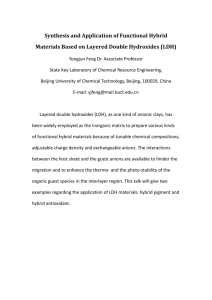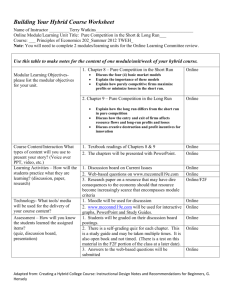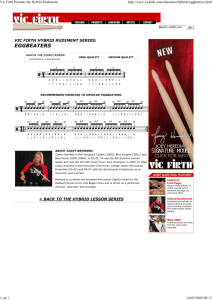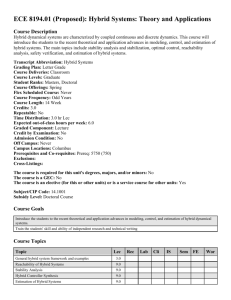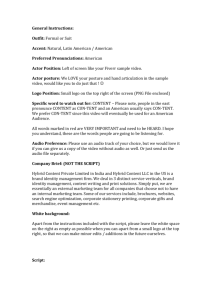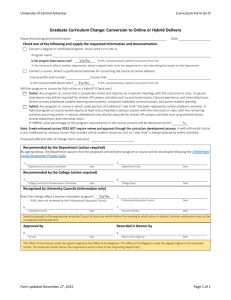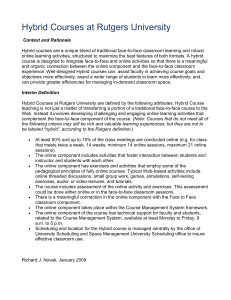„Hybrid” form of organisation structure
advertisement
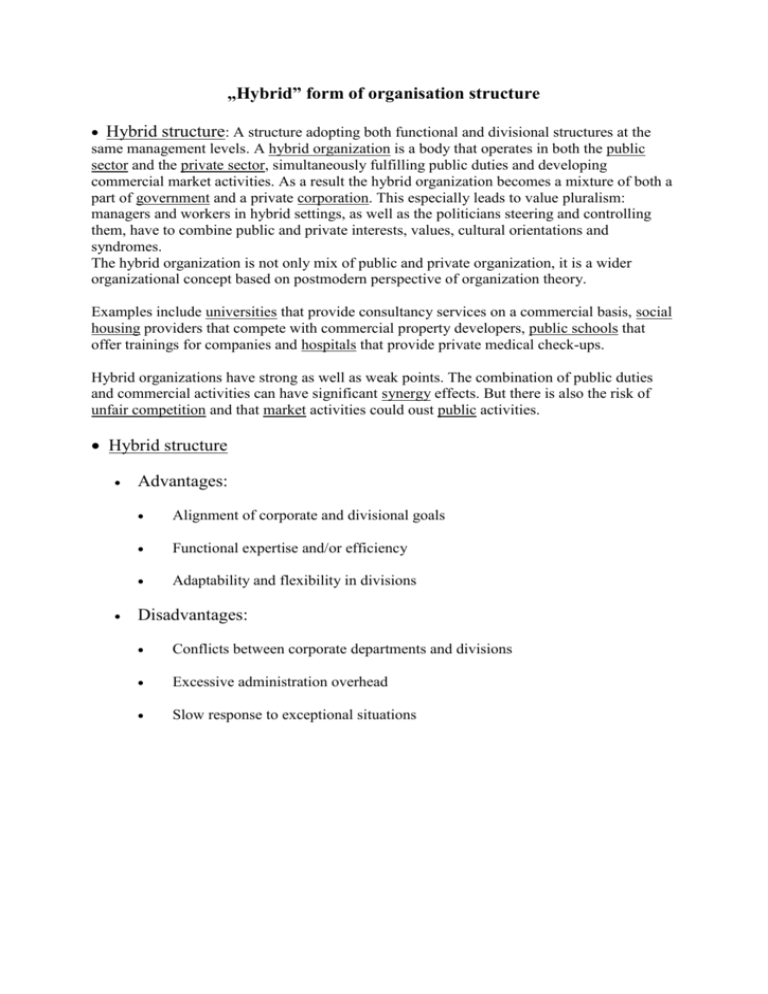
„Hybrid” form of organisation structure Hybrid structure: A structure adopting both functional and divisional structures at the same management levels. A hybrid organization is a body that operates in both the public sector and the private sector, simultaneously fulfilling public duties and developing commercial market activities. As a result the hybrid organization becomes a mixture of both a part of government and a private corporation. This especially leads to value pluralism: managers and workers in hybrid settings, as well as the politicians steering and controlling them, have to combine public and private interests, values, cultural orientations and syndromes. The hybrid organization is not only mix of public and private organization, it is a wider organizational concept based on postmodern perspective of organization theory. Examples include universities that provide consultancy services on a commercial basis, social housing providers that compete with commercial property developers, public schools that offer trainings for companies and hospitals that provide private medical check-ups. Hybrid organizations have strong as well as weak points. The combination of public duties and commercial activities can have significant synergy effects. But there is also the risk of unfair competition and that market activities could oust public activities. Hybrid structure Advantages: Alignment of corporate and divisional goals Functional expertise and/or efficiency Adaptability and flexibility in divisions Disadvantages: Conflicts between corporate departments and divisions Excessive administration overhead Slow response to exceptional situations



